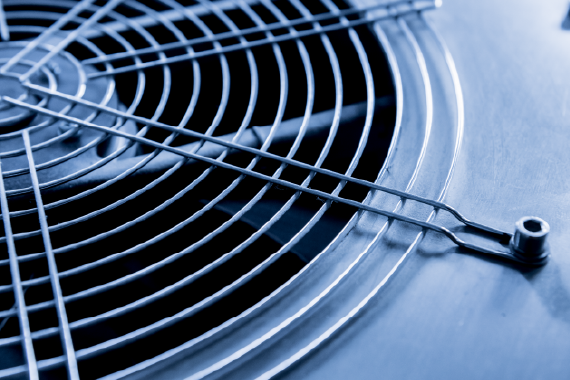We collaborate to achieve sustainable success
Get in touch with usNatural vs. Synthetic: Navigating the Complex Choices in Low-GWP Refrigerants
As the F-Gas phase-down intensifies in mid-2025, the global cooling and heating industry finds itself at a critical juncture, grappling with a fundamental strategic choice: whether to embrace natural refrigerants or opt for their synthetic hydrofluoroolefin (HFO) counterparts. Both categories offer significantly lower Global Warming Potential (GWP) than the hydrofluorocarbons (HFCs) they are replacing, but each comes with its own distinct set of advantages, disadvantages, and application-specific considerations. The decision is far from straightforward, demanding a nuanced understanding of safety, performance, infrastructure, and long-term sustainability.
The Imperative for Change
The driving force behind this pivotal choice is the aggressive global push to mitigate climate change. Regulations like the EU F-Gas Regulation (EU 2024/573) and the U.S. EPA's AIM Act are systematically phasing down high-GWP HFCs, which are thousands of times more potent than carbon dioxide (CO2) as greenhouse gases. This regulatory pressure, coupled with increasing supply shortages and price volatility for traditional refrigerants, is compelling businesses to transition rapidly to more environmentally benign alternatives.
Natural Refrigerants: The Eco-Champions
Natural refrigerants substances found naturally in the environment boast ultra-low GWPs, often close to 1, making them highly attractive for long-term sustainability.
- Carbon Dioxide (CO2 / R-744):
- Advantages: With a GWP of 1, CO2 is an ultra-low GWP, non-flammable, and non-toxic refrigerant. It offers excellent heat transfer properties, making it highly efficient in certain applications.
- Disadvantages: CO2 systems operate at very high pressures, requiring specialized equipment and robust system designs, which can lead to higher initial installation costs.
- Applications: It is gaining considerable traction, particularly in supermarket and industrial refrigeration, as well as in some VRV (Variable Refrigerant Volume) systems.
- Ammonia (NH3 / R-717):
- Advantages: Ammonia is a highly efficient natural refrigerant with an ultra-low GWP (<1). It has been a staple in industrial cooling for decades due to its superior thermodynamic properties.
- Disadvantages: Ammonia is toxic and mildly flammable (classified as B2L), necessitating stringent safety protocols, specialized equipment, and careful handling to prevent leaks and ensure personnel safety.
- Applications: Primarily used in large-scale industrial refrigeration and cold storage facilities.
- Hydrocarbons (e.g., Propane / R-290):
- Advantages: Propane (R-290) is a natural refrigerant with an ultra-low GWP (<1). It is efficient, affordable, and abundant, making it a compelling choice for various applications.
- Disadvantages: Hydrocarbons are highly flammable (classified as A3), which can limit their widespread use in some regions due to safety codes and equipment restrictions, particularly concerning charge limits in indoor applications.
- Applications: Increasingly adopted in heat pumps and smaller commercial refrigeration systems, especially in Europe and Asia.
Overall, natural refrigerants offer a compelling long-term solution for climate protection, but their adoption often requires significant infrastructure adjustments, specialized equipment, and enhanced safety measures, which can contribute to higher initial costs.
Synthetic HFOs: The Transition Facilitators
Hydrofluoroolefins (HFOs) and their blends are a newer generation of synthetic refrigerants designed with significantly lower GWPs than HFCs, often in the hundreds or even below 1.
- HFOs (e.g., R-32, R-454B, HFO-1234yf, R-474A):
- Advantages: HFOs offer a balance of lower GWP (e.g., R-32 at 675, R-454B at 466, R-474A at <1) and often provide compatibility with existing system designs, which can ease the transition for some businesses compared to natural refrigerants. They are generally energy-efficient and widely adopted in new equipment.
- Disadvantages: Many common HFOs and HFO blends are classified as A2L (mildly flammable), requiring updated technician training, specialized tools, and new safety protocols to ensure safe handling and installation. Some HFOs are also considered Per- and Polyfluoroalkyl Substances (PFAS) or degrade into PFAS, which are persistent chemicals linked to environmental and health risks, leading to discussions about potential future restrictions in regions like Europe. Initial costs can also be higher due to technology investments and patent restrictions.
- Applications: R-32 and R-454B are increasingly replacing R-410A in HVAC systems, including residential and commercial air conditioning units and heat pumps. HFO-1234yf is a key alternative in automotive air conditioning and chillers. Daikin's R-474A is an ultra-low GWP A2L option for residential heat pumps and air conditioners, offering flexibility in charge quantities compared to highly flammable alternatives.
Overall, HFOs can facilitate a smoother transition for some existing infrastructures, but they introduce new safety considerations and may face future scrutiny regarding their PFAS characteristics.
The Nuance of Choice: No One-Size-Fits-All
The industry is not converging on a single "best" alternative. Instead, the choice between natural and synthetic low-GWP refrigerants is highly application-specific. As Daikin emphasizes, "there is no one-size-fits-all solution" for decarbonizing heating and cooling.
- Holistic Analysis: Refrigerant selection must be based on a holistic analysis that considers GWP, energy efficiency, safety (flammability, toxicity), system compatibility, installation costs, long-term operational expenses, and regional regulations.
- Safety Standards: The mild flammability of A2L refrigerants and the higher flammability/toxicity of some natural refrigerants necessitate updated safety standards, building codes, and comprehensive technician training programs to ensure safe installation and maintenance.
- Market Dynamics: Manufacturers like Arkema, Chemours, Daikin, and Honeywell are diversifying their portfolios to offer a range of low-GWP solutions, reflecting the varied needs of the market.
Mid-2025 marks a critical period where the F-Gas phase-down is forcing a definitive shift in refrigerant choices. The debate between natural and synthetic low-GWP refrigerants highlights the complex trade-offs inherent in the pursuit of environmental sustainability. While natural refrigerants offer the ultimate low-GWP solution, they often demand significant infrastructure changes. HFOs provide a more direct transition for some systems but introduce new safety and chemical considerations. Ultimately, the industry's success hinges on its ability to make informed, application-specific decisions, invest in comprehensive training, and continue innovating to deliver safe, efficient, and truly climate-friendly cooling and heating solutions for the future.

